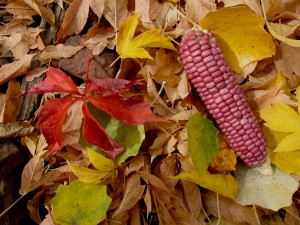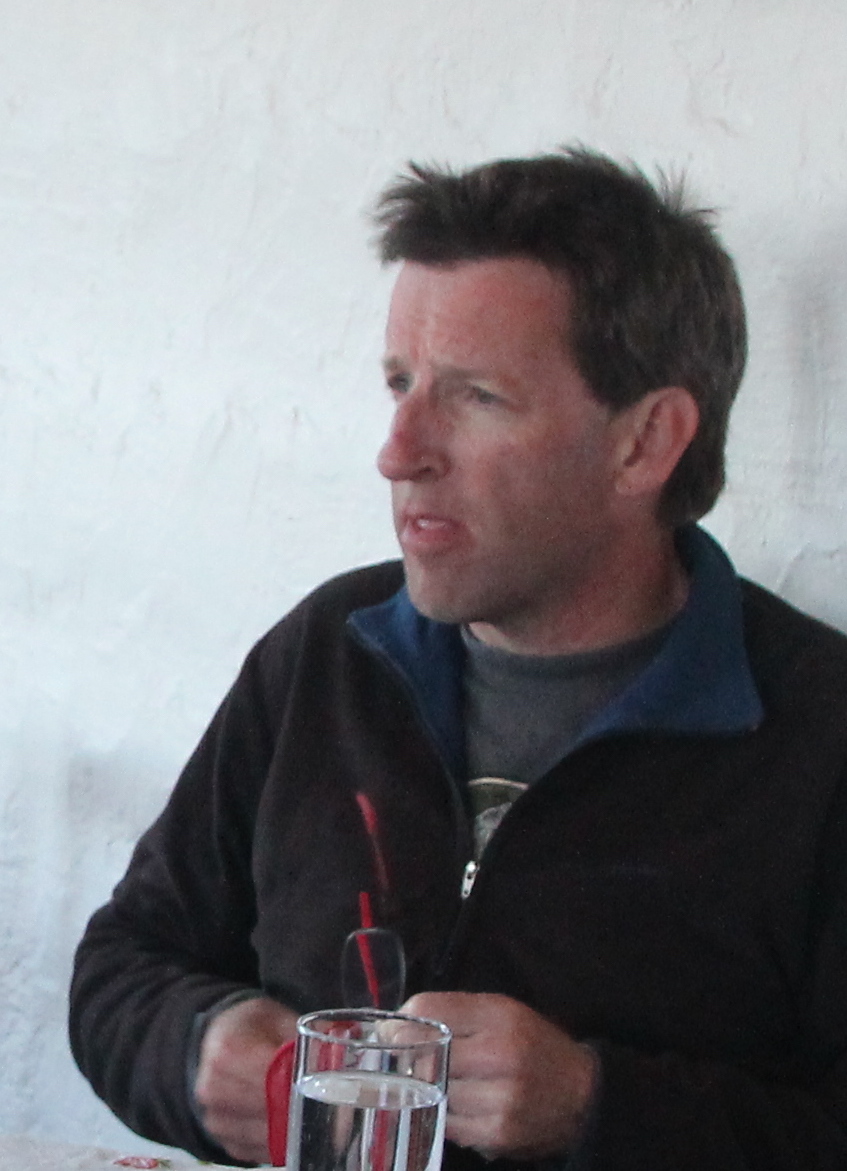This week’s guest columnist is Peter Friederici.
Even after a decade living here, there’s no way not to notice a train nearing, especially when the diesels are putting out the deep bass rumbling they need to pull 100 cars up the hill going west. The sound fills the backyard, drowning out the birds and the whine of cars and occasional sirens down on Route 66.
And the crunch of the cornstalks. There’s a storm coming in, one of those wet fall sock-ins that will knock the leaves off the trees until the gutters run yellow with the spirit of the season. Before it does, I want to pick the corn so it can dry.
It’s Hopi blue corn, the kind that makes for really good coarse cornmeal. Grinding it will be an enjoyable chore some winter day. The field is a tangle of broken and standing stems, punctuated with the higher, prickly stalks of sunflowers. As I twist the stalks off and shuck off the dried outer husks, I can almost imagine this as a backyard idyll—the crop grown for fun in a beautiful, tucked-away spot, a refuge from a world that has been too much with us of late.
If only. But it doesn’t take much more than the rumbling of the freight train to remind me that even here in what I grandiosely like to call my cornfield, even here in a lovely if slightly run-down old neighborhood, even here in college-town and outdoor-recreation-mecca Flagstaff there is no such thing as an idyll. The trains a block from the backyard are carrying corn syrup and ethanol from the Midwest out to L.A.; they’re ferrying new cars; they bear endless loads of containers full of stuff put together by minimum-wage workers in China and bound for a Walmart or Amazon distribution center near you. They’re a constant reminder that we are all cogs in a global economy whose waste products are causing weird weather and a host of other problems.
And I don’t have to go far for other, more immediately alarming sorts of encounters. Just a week earlier I was walking home when I came upon a genuine L.A.-style police chase that went right by our house, the cruisers trying to box in a white pickup driven by an apparently impaired driver, slow but relentless. I saw him go by, his face a study in uncomprehending blankness, just before he sped up again past the cops and headed the wrong way up 66 on his way to smashing into a couple of cars downtown some minutes later.
Many of us just don’t expect that sort of thing here, and so were caught off guard a whole lot more a few mornings later when word of the shooting at NAU got out, spreading helter-skelter through text messages and phone calls and Facebook posts.
Even before there was any clarity to what had happened, there was a clear thread to the story being told: the pristine college town peace shattered by urban-style violence. But the root of the story is as wrong-headed as it is charming. Who doesn’t want to live in the shining small city on a hill, where the chosen people smile and trust one another and thrive on showing the visitors around? Even more so, who of the many, many more people who can’t live here don’t want to believe that there are such idyllic places out there somewhere, oases that offer refuge from the smog and the violence and the relentless pace?
That sure was me, anyway, before I moved to Flagstaff from Chicago—a city that experiences gun violence pretty much every night.
But in reality a look at our town that goes beyond the platitudes and the tourist brochures reveals that it has always been a full part of the world that so many seek to escape: we have always had our share of violence and other forms of criminality and greed and selfishness, whether deliberate or self-centered or just plain stupid. For all its charms Flagstaff has always been embedded in the larger society with its traditions of kicking the marginalized aside—the city retains vestiges of its once more overtly segregated days, and even the university campus that got so much unwanted media attention a couple of weeks ago was built in part at the cost of moving away Navajo families who lived there.
It’s not our only tradition, of course, and in the weeks following the shooting it has been impossible not to be impressed by public and private outpourings of shared grief and generosity, as well as by what I hope is a slow-gathering stream of courage to deal squarely with our country’s big problems. That’s what keeps me tolerating the noise of the train, I guess, recurring as it does through day and night—a knowledge that the good and bad flow together wherever we are, that we can’t get to the new shimmering green of spring without going through the rigors of fall.
Peter Friederici is a writer and a former itinerant field biologist and tour guide. He teaches journalism at Northern Arizona University in between bouts of camping, gardening, and fixing up an old house.


